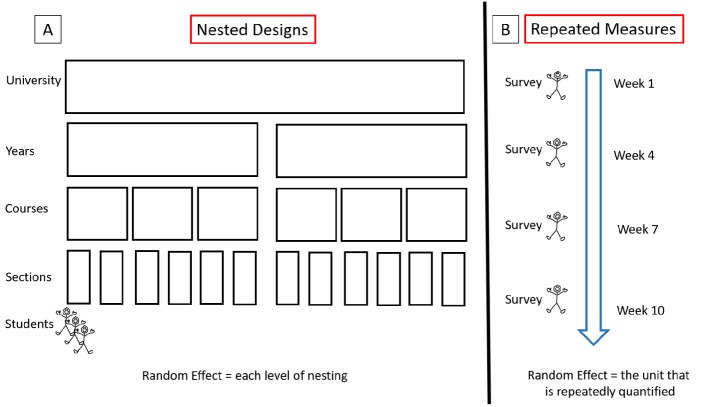FIGURE 3.
Random effects are important to include when modeling data from (A) nested design studies and (B) repeated-measures studies. In both nested designs and repeated measures, the outcome is quantified on the student level. (Note that this is not always the case in DEBR studies; e.g., a researcher may be interested in which courses have the highest proportion of women, in which case the outcome is likely measured on the section level.) In the nested design illustration (A), students are nested in sections, which are nested in courses, which are nested in years, which are nested in universities. Each of these nested levels, or clusters, is important to account for with random effects. Similarly, in the repeated-measures study (B), the outcome (students’ survey responses) is quantified on the student level, and students take the survey four times. In this case, it is important to account for the fact that students are repeated, so student 1 on survey 1 is not independent from student 1 on survey 2. Including a student random effect accounts for this nonindependence within a student.

